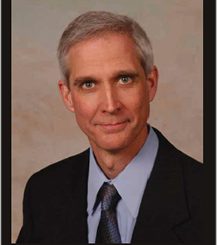

We American Catholics are, in the main, notoriously uninterested in our own history. So it likely escaped the notice of many that December 3 marked the bicentenary of the death of John Carroll, one of the greatest who ever lived among us.
The adjective “first” is applied to John Carroll more frequently than to any other figure in U.S. Catholic history. And with good reason: he was the first “Superior of the American Mission” in the independent United States, the first U.S. bishop (of my native Baltimore), the first metropolitan archbishop (also of Baltimore), the first bishop to ordain priests and consecrate bishops in the United States, the founder of the first Catholic college and the first Catholic seminary in the United States, the benefactor of St. Elizabeth Ann Seton (and thus the first patron of Catholic schools in the United States), the builder of the first cathedral church in the United States, and so forth and so on.
Carroll set a pattern of Catholic engagement with American civil society and American public life that his wiser successors in the American episcopate have followed, even as he tried to explain this strange American novus ordo seclorum (as the Great Seal puts it) to often-puzzled, and sometimes hostile, Roman officials. By holding the tiller steady amidst the ideological storms let loose by the French Revolution, Archbishop Carroll kept the young Church in the United States tethered to its Roman source of unity, even as Catholicism in America pursued the unique possibilities opened up by the First Amendment: a journey that eventually influenced Vatican II’s Declaration on Religious Freedom.
Over the past two hundred twenty-five years, precisely fourteen hundred bishops have followed John Carroll in the Catholic hierarchy within the borders of today’s United States. Yet that none of them had a greater impact on Catholic life in America than the first of that episcopal line, who faced challenges unparalleled in world Catholic history and met them with singular wisdom. That Catholicism in the United States today is the most vital and vibrant local Church in the developed world has a lot to do with a son of Maryland, John Carroll, whose memory we should reverence, now and in the future.
And while we remember Archbishop John Carroll, let’s also remember another great American churchman who died this past April 17: Cardinal Francis Eugene George, O.M.I.
Of those 1,400 bishops who have followed Archbishop Carroll, none has had a keener intellect, nor a more penetrating insight into the Church or the America of his time, than Cardinal George. During his seventeen years of service in the College of Cardinals he was its most respected American member: he was a gifted linguist who could speak to virtually every fellow-cardinal in a language he understood; he was manifestly a man of faith and deep piety, whose courage in battling post-polio syndrome and cancer was a model of suffering born with Christian nobility; his brother-cardinals sought his counsel, not only because they knew him to be intelligent, pious, and gifted, but above all because they knew him to be good.
He took up a very difficult task in Chicago in 1997, for the archdiocese was becalmed in the post-Vatican II doldrums and he was called to lead it from that shallow, brackish water into the brisk, bracing, if turbulent seas of the New Evangelization. That he did, not least by remaking Mundelein Seminary, an accomplishment that will bear fruit in Chicago and throughout the Midwest for decades to come. By the time he died this past April, he had earned the affection and respect of a tough town, which came to recognize in its first native-son bishop a man who loved the Windy City even as he called it to a nobler vision of itself.
Cardinal George also led the U.S. bishops to recognize that being a Church faithful to the John Carroll legacy now required challenging the public authorities to recommit themselves to the first freedom, religious freedom. That path, reconfirmed at November’s bishops’ conference meeting, is another memorial to Francis George, one of the greatest of Carroll’s successors.
May these two heroes rest in the peace of Christ, whom they served so well.
If you value the news and views Catholic World Report provides, please consider donating to support our efforts. Your contribution will help us continue to make CWR available to all readers worldwide for free, without a subscription. Thank you for your generosity!
Click here for more information on donating to CWR. Click here to sign up for our newsletter.





